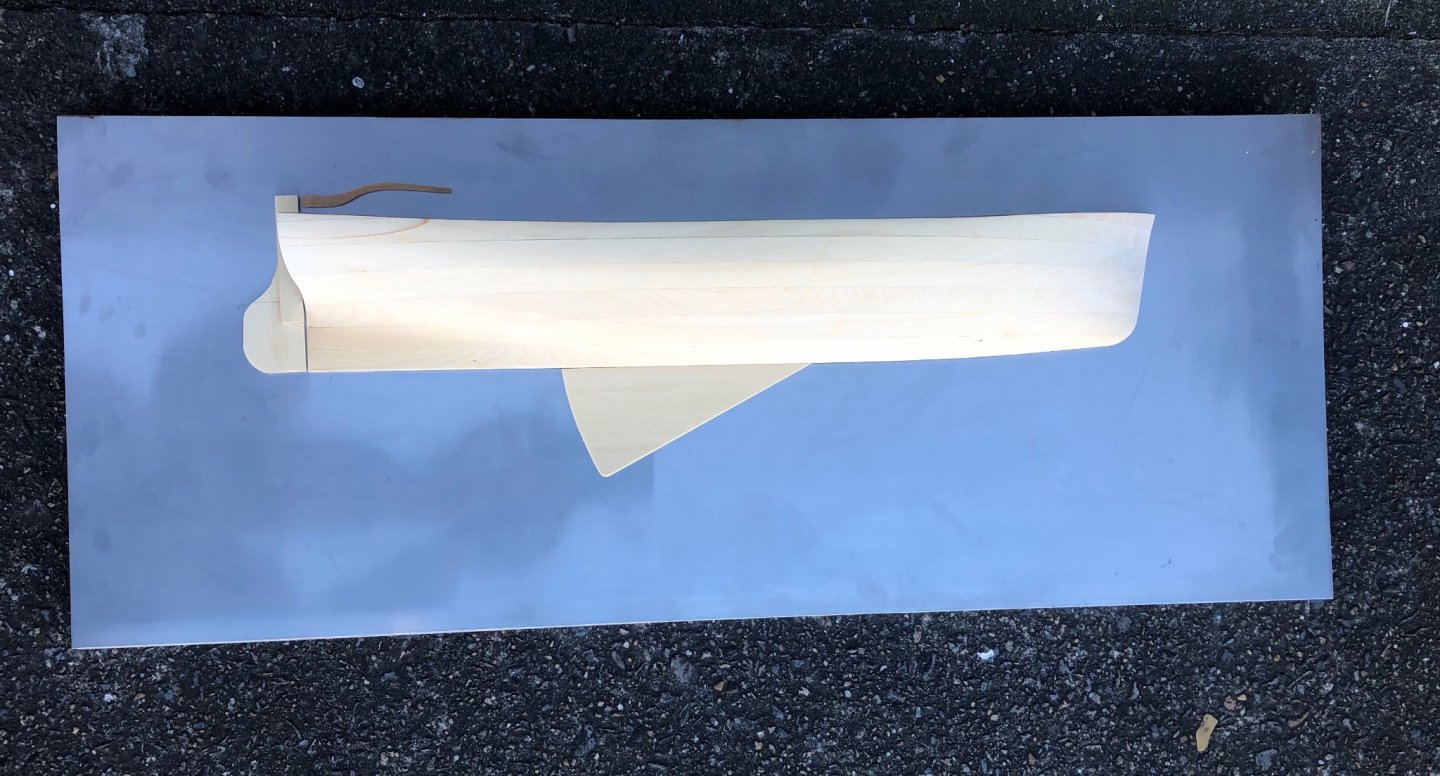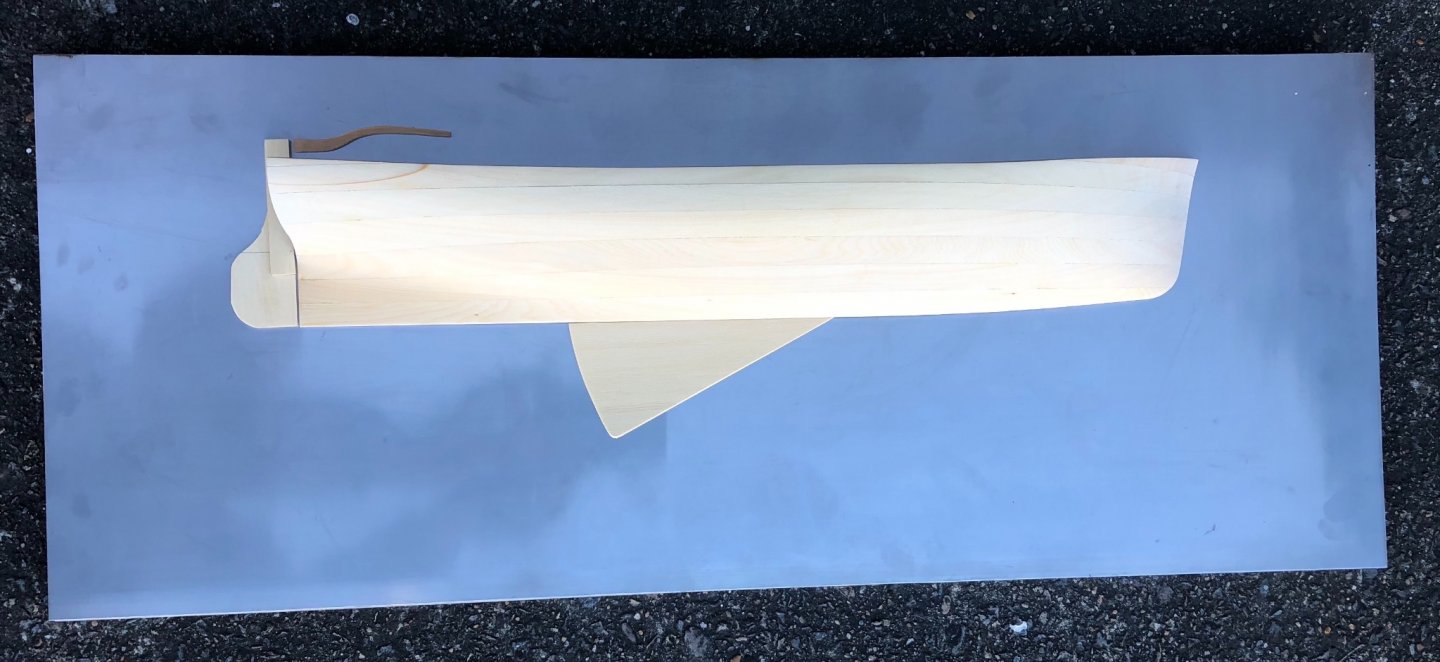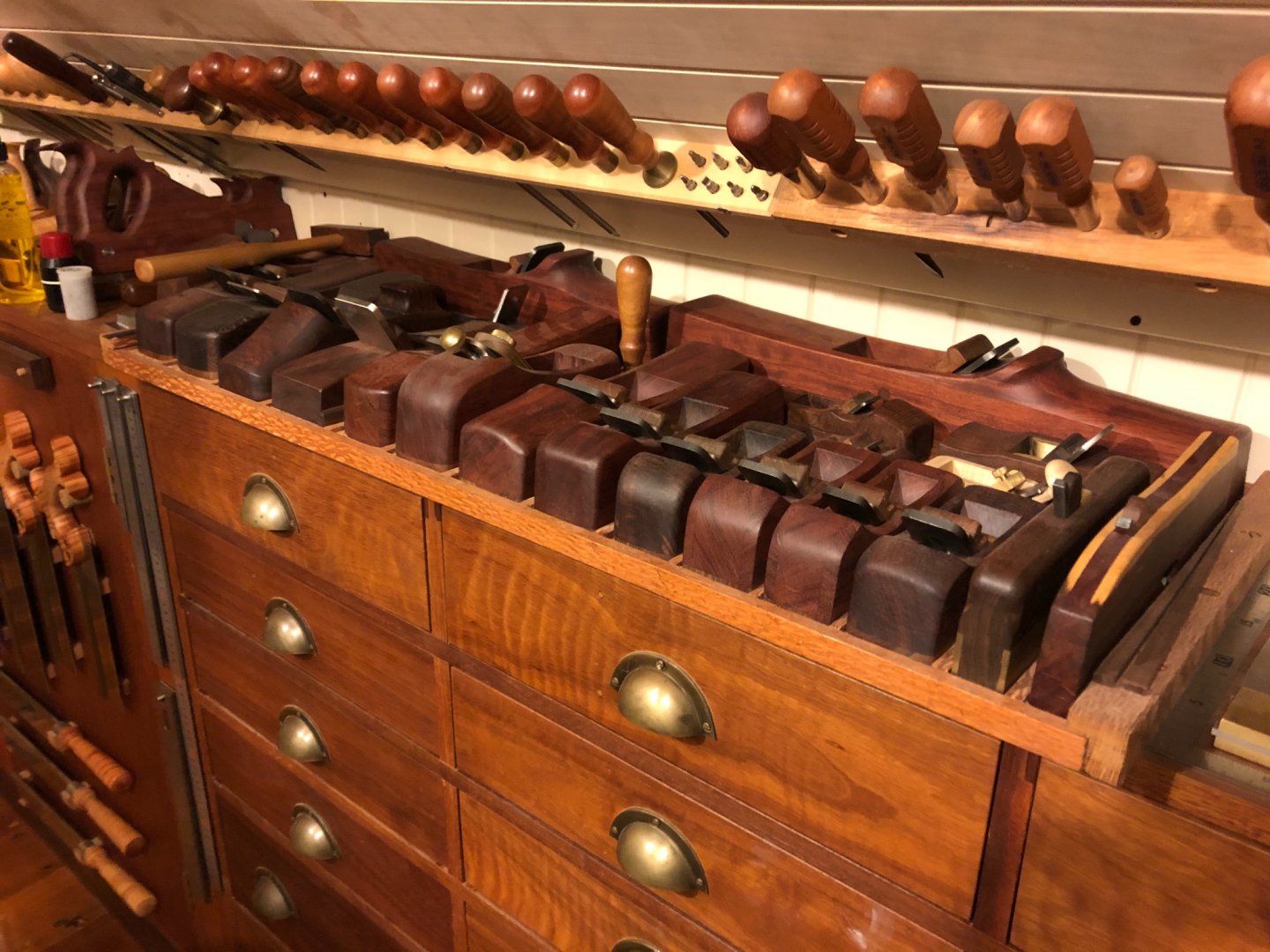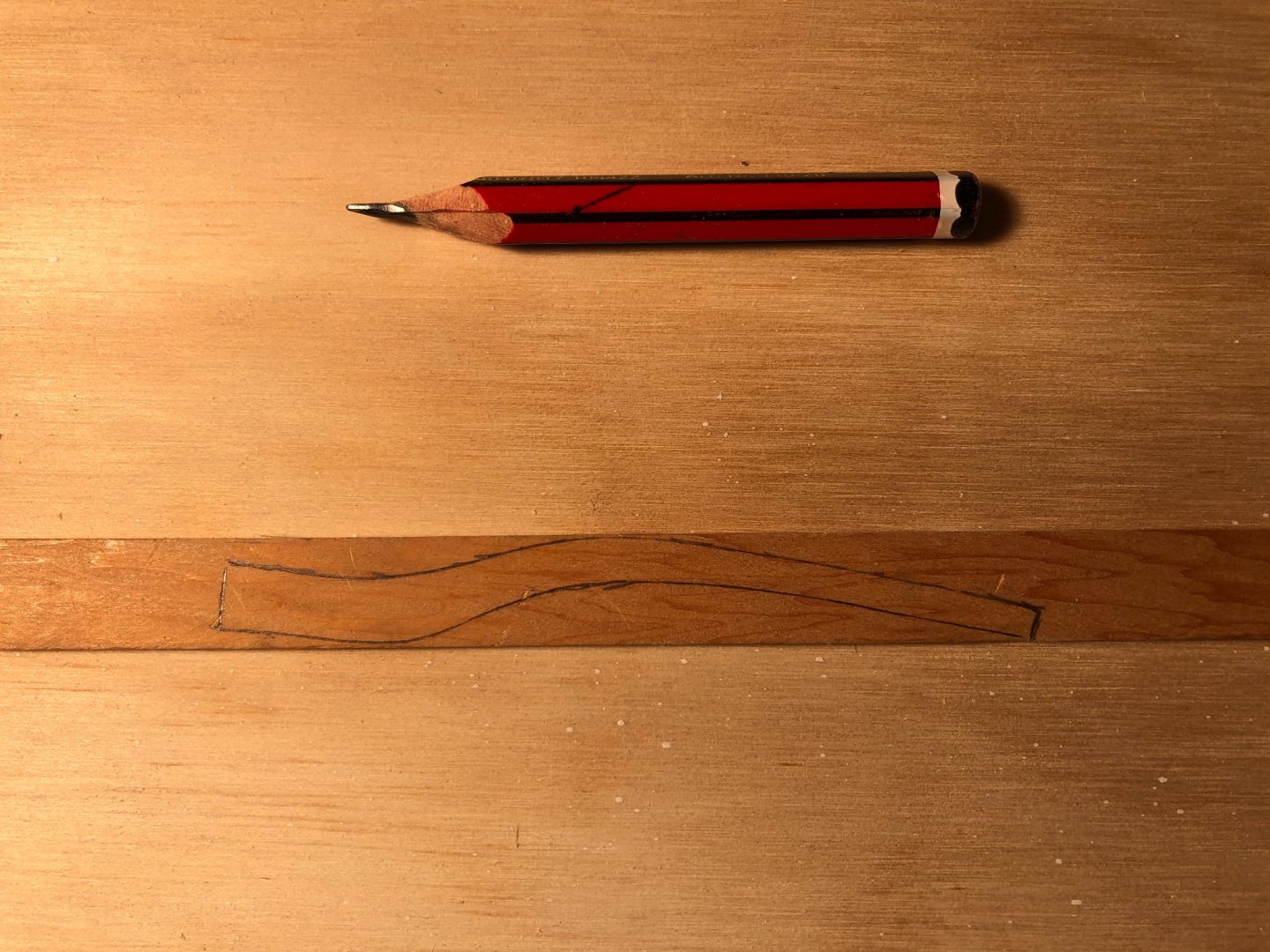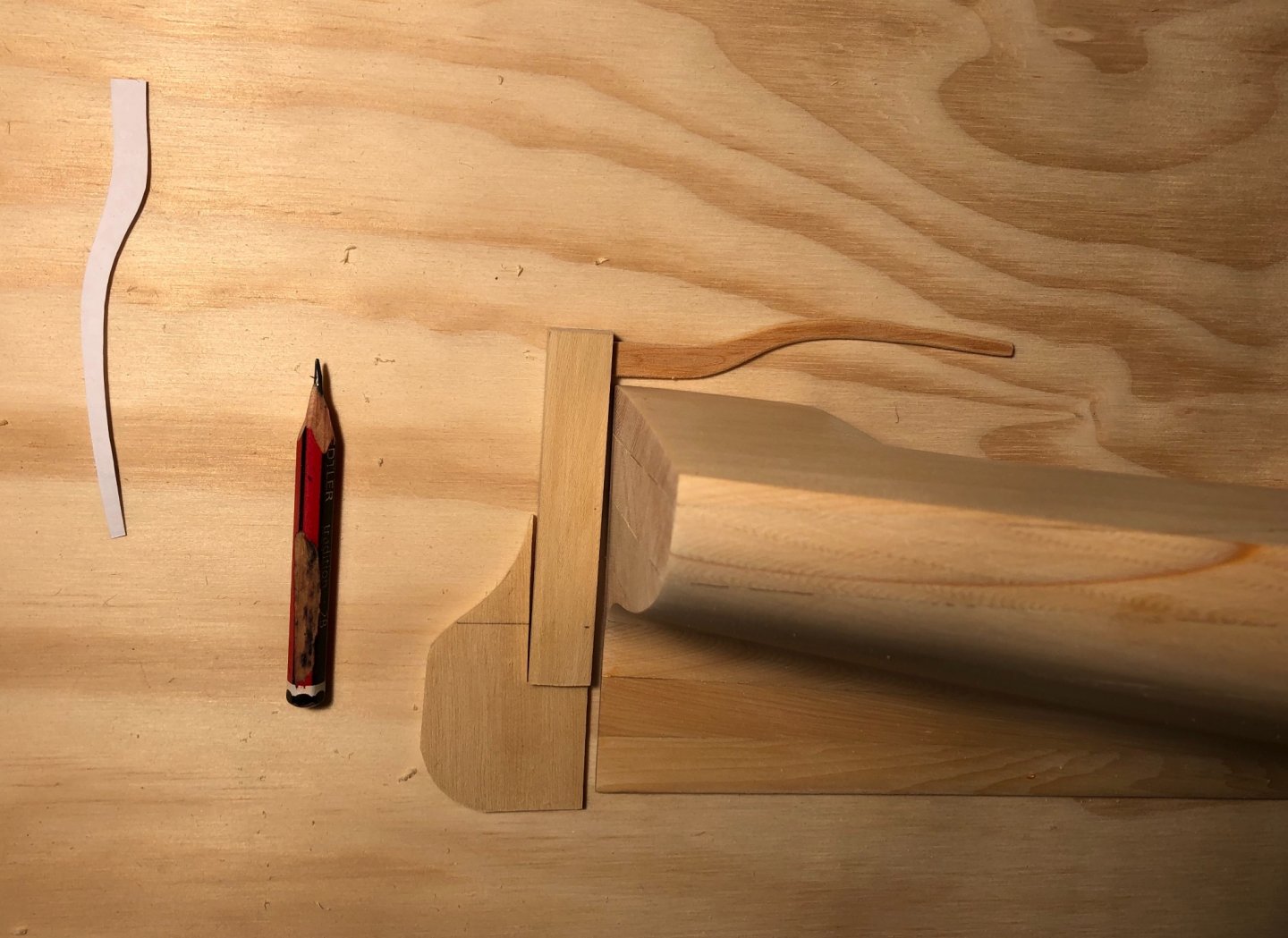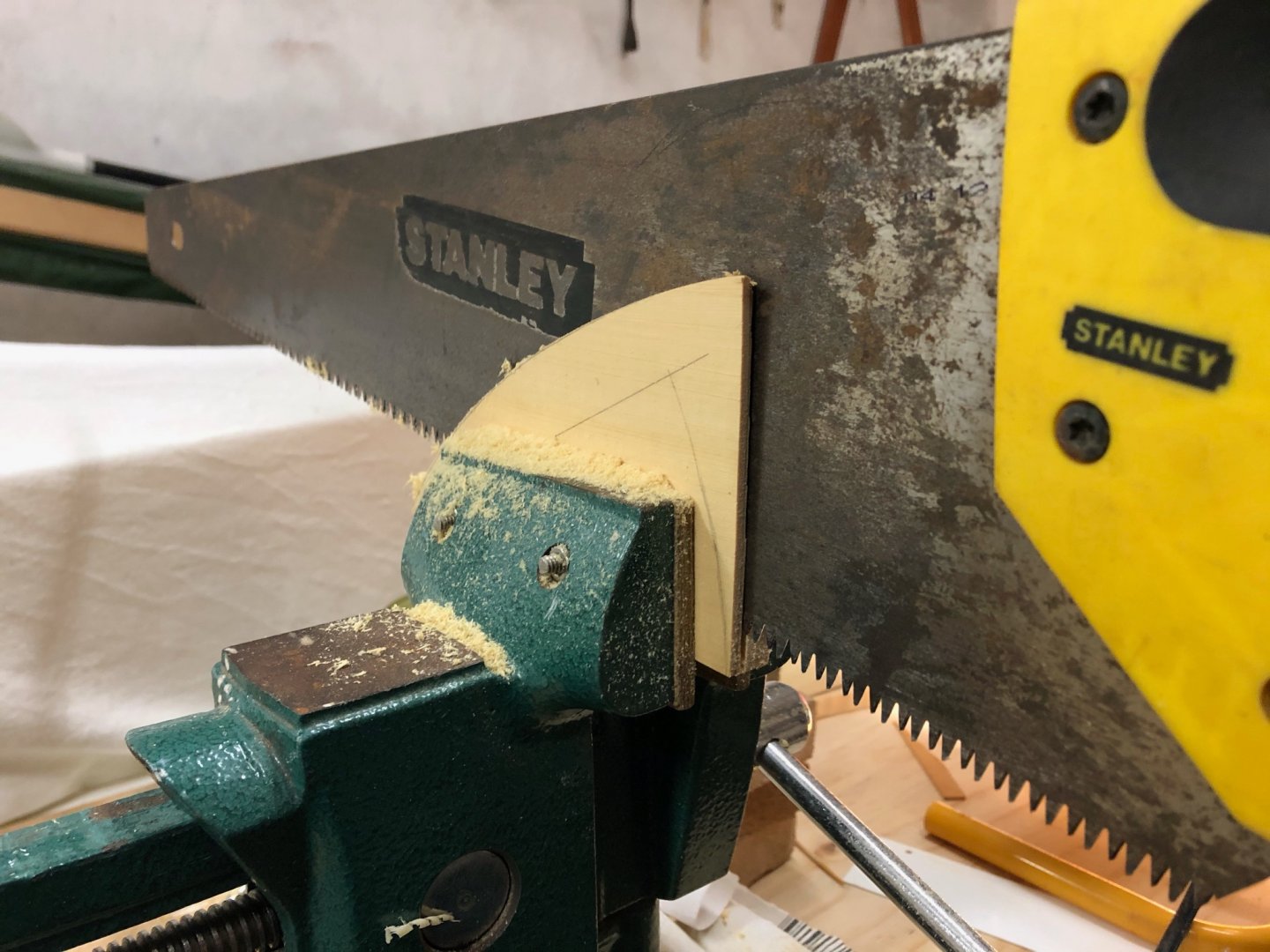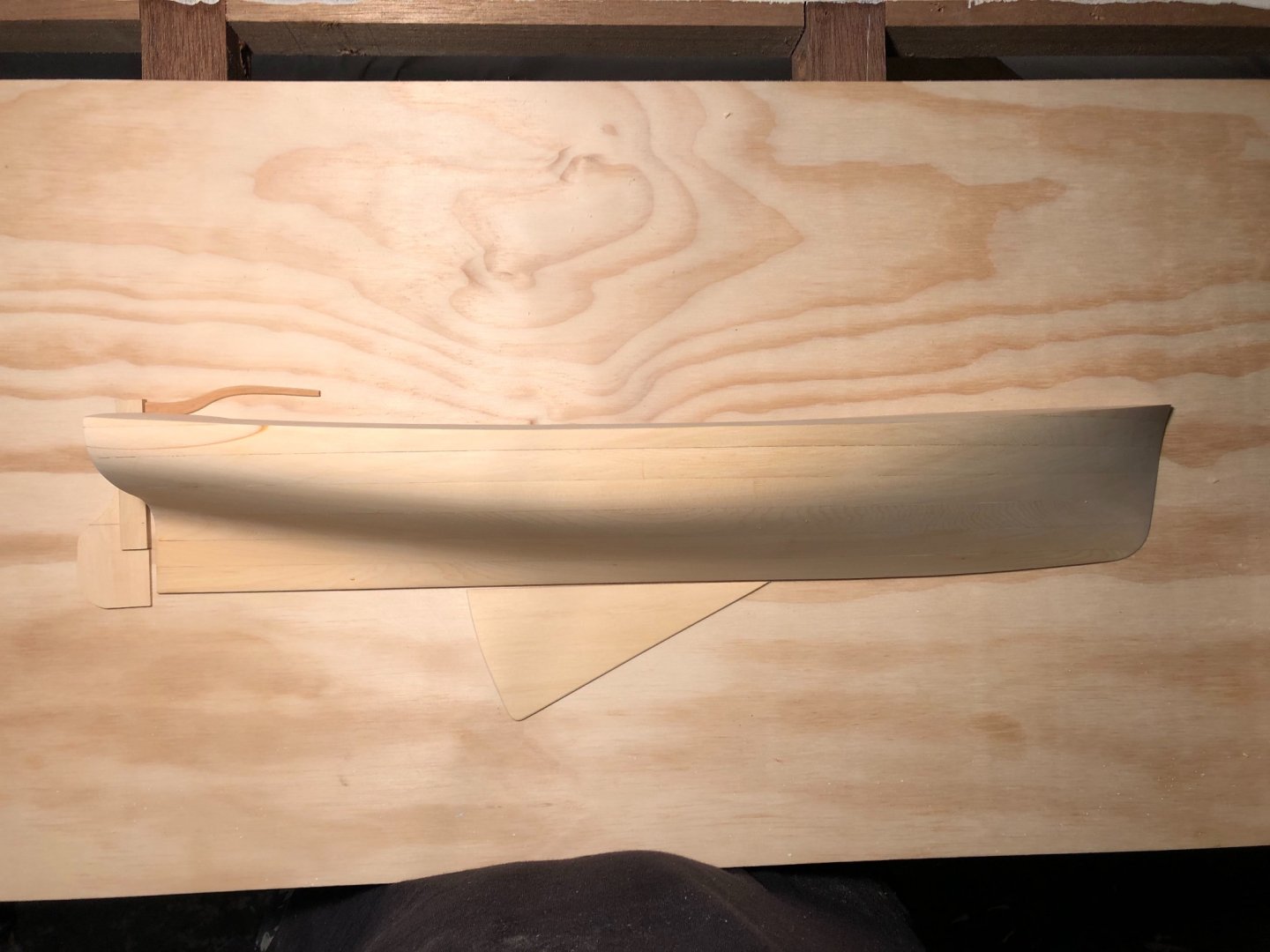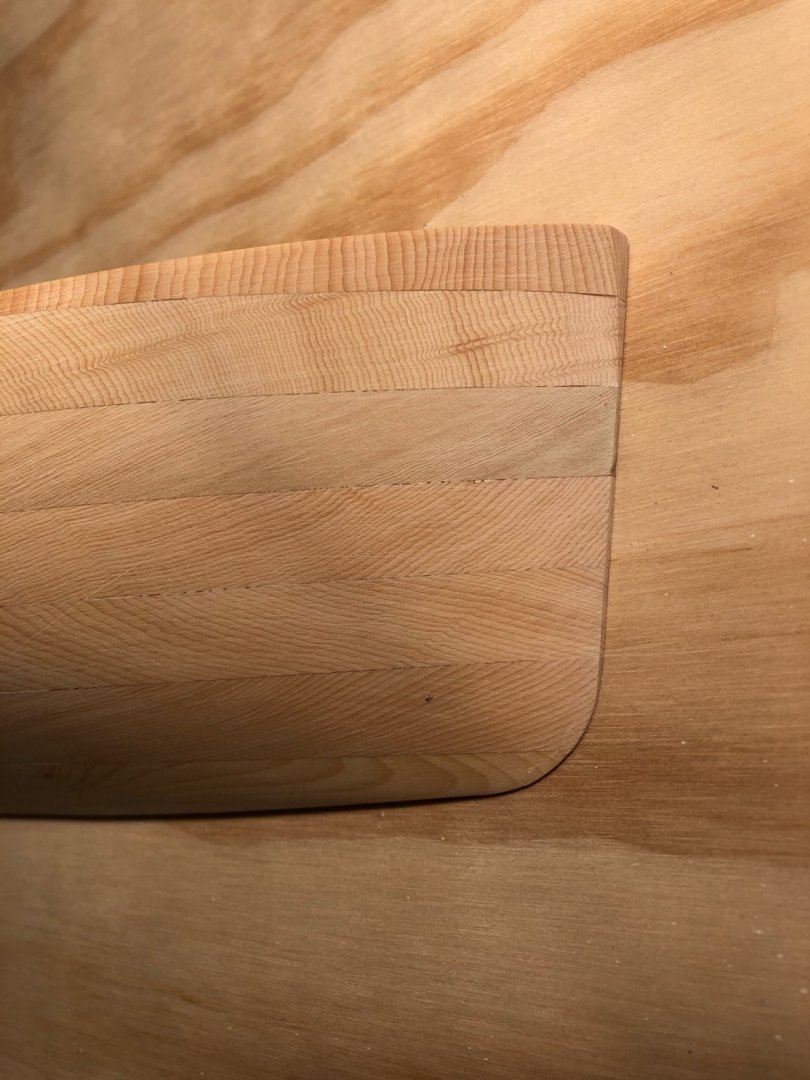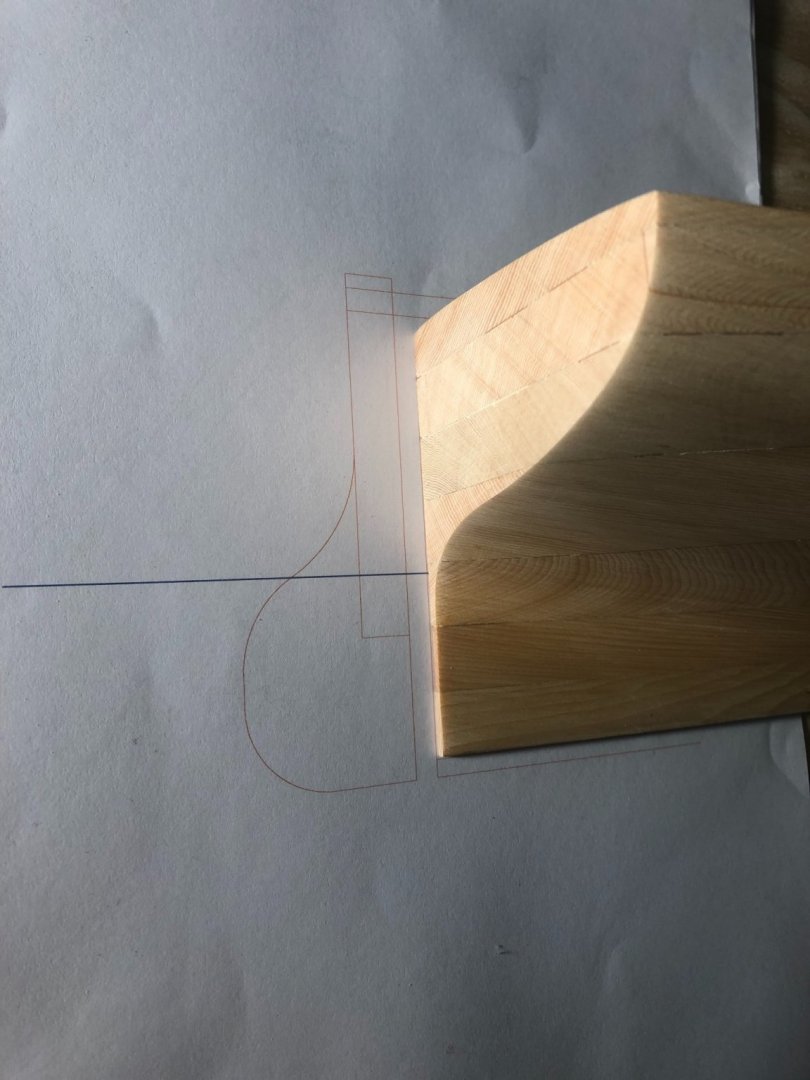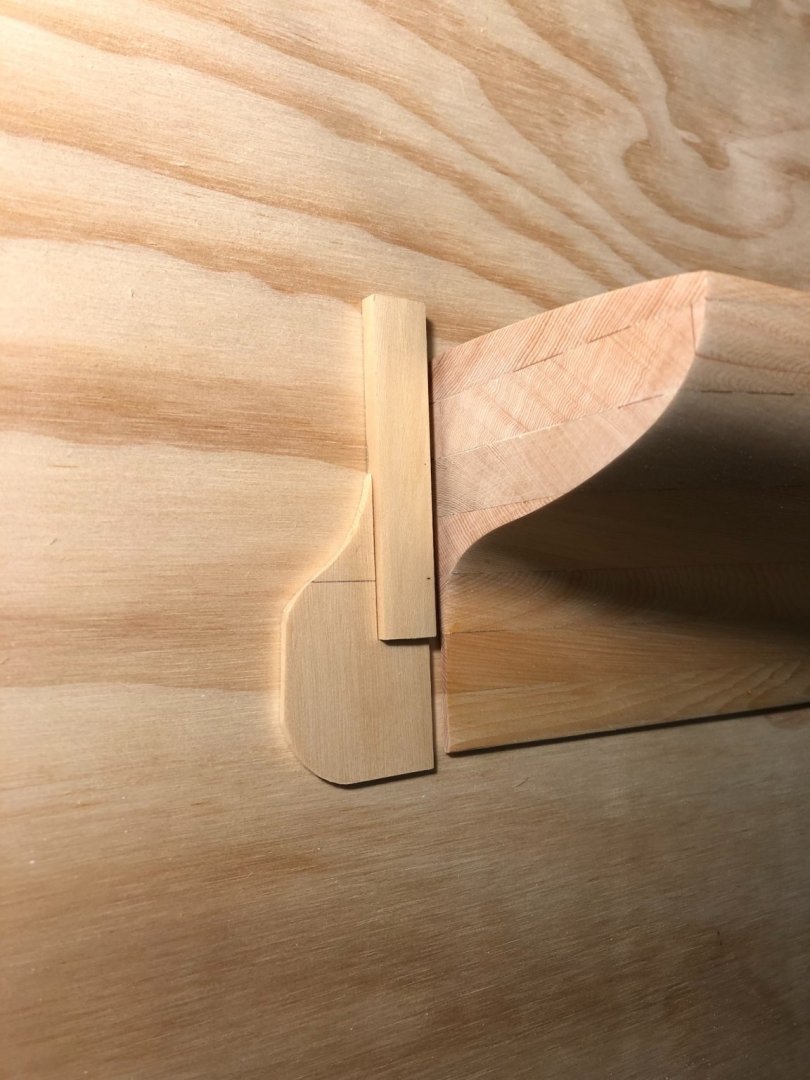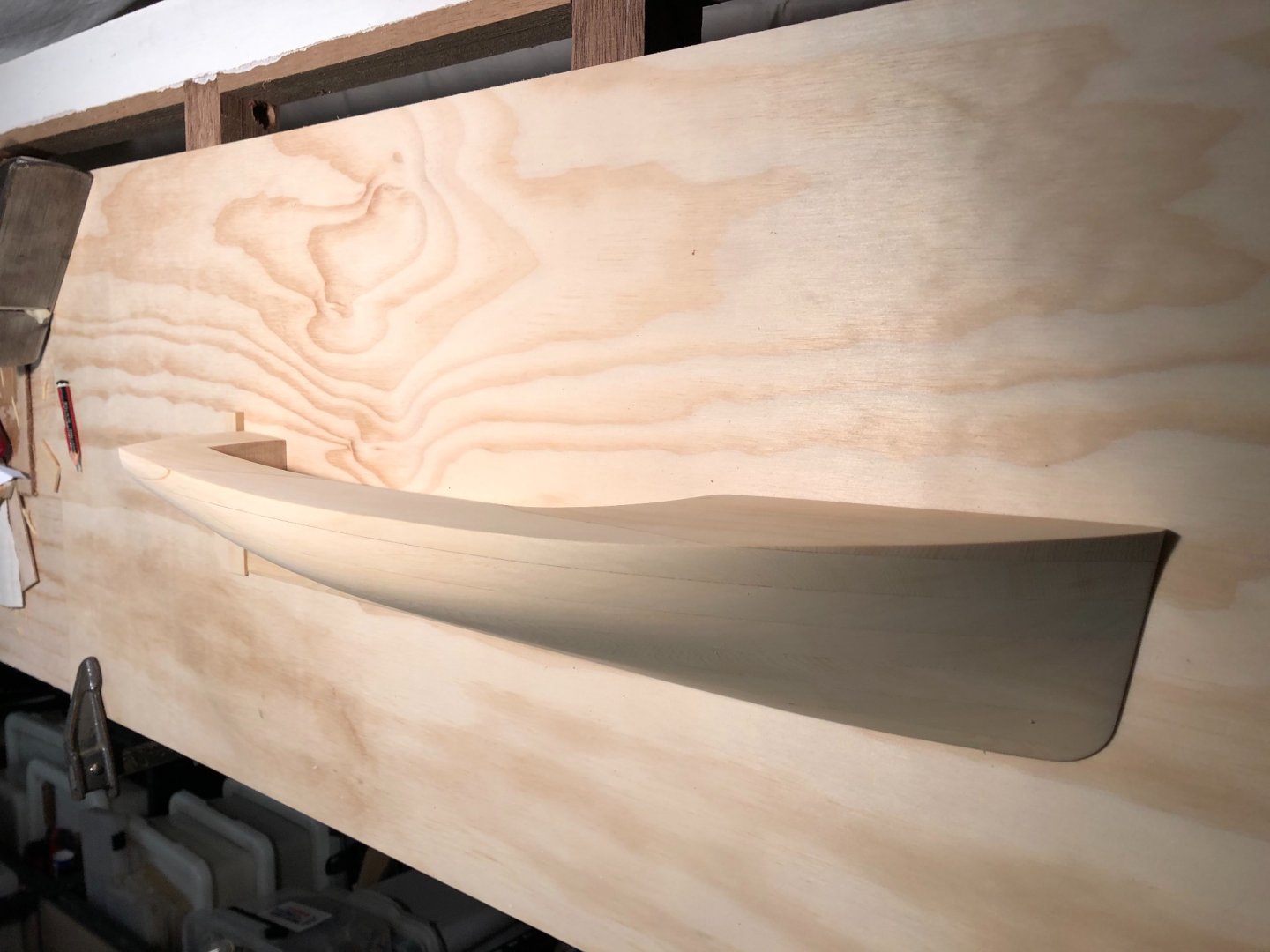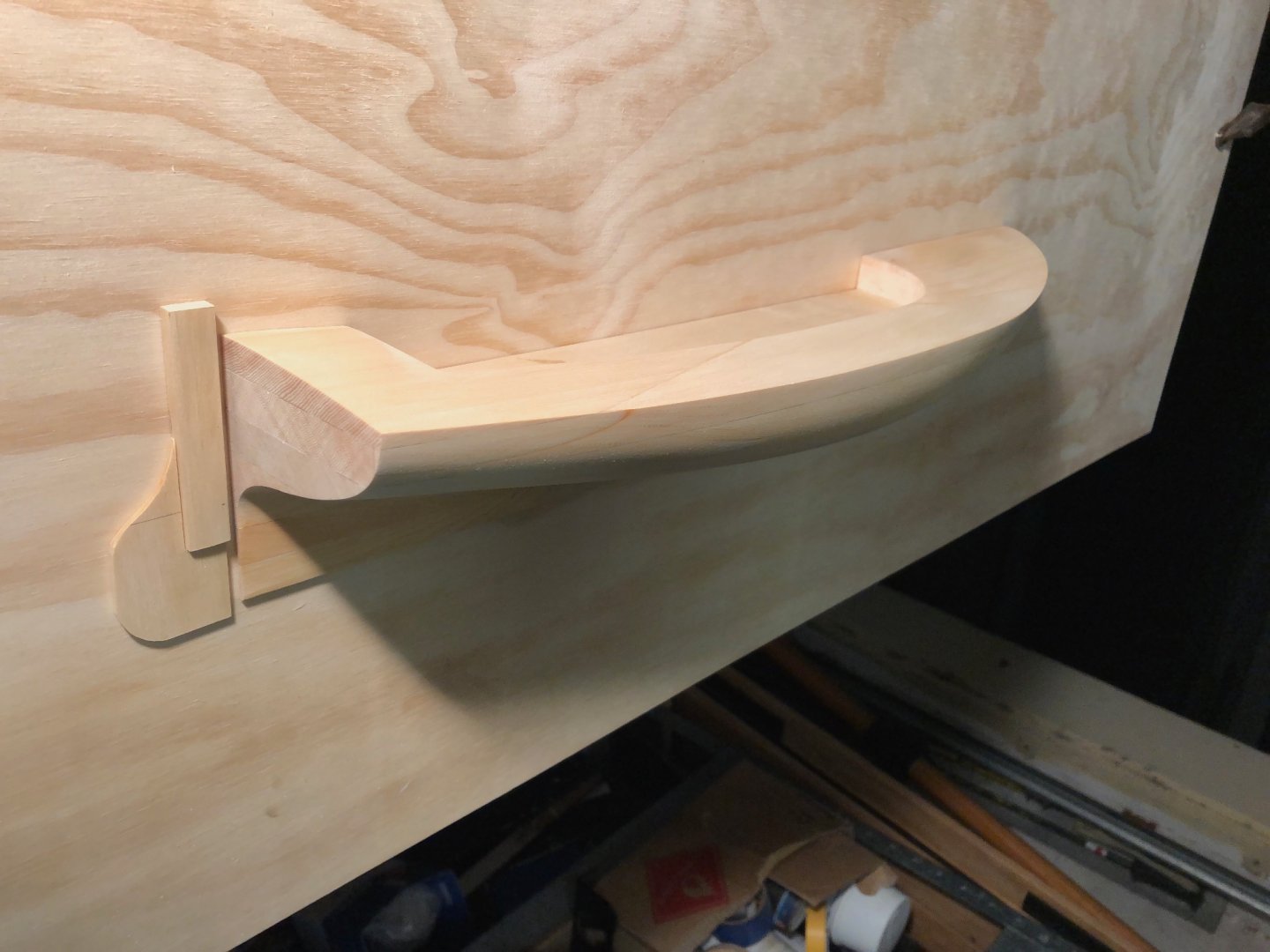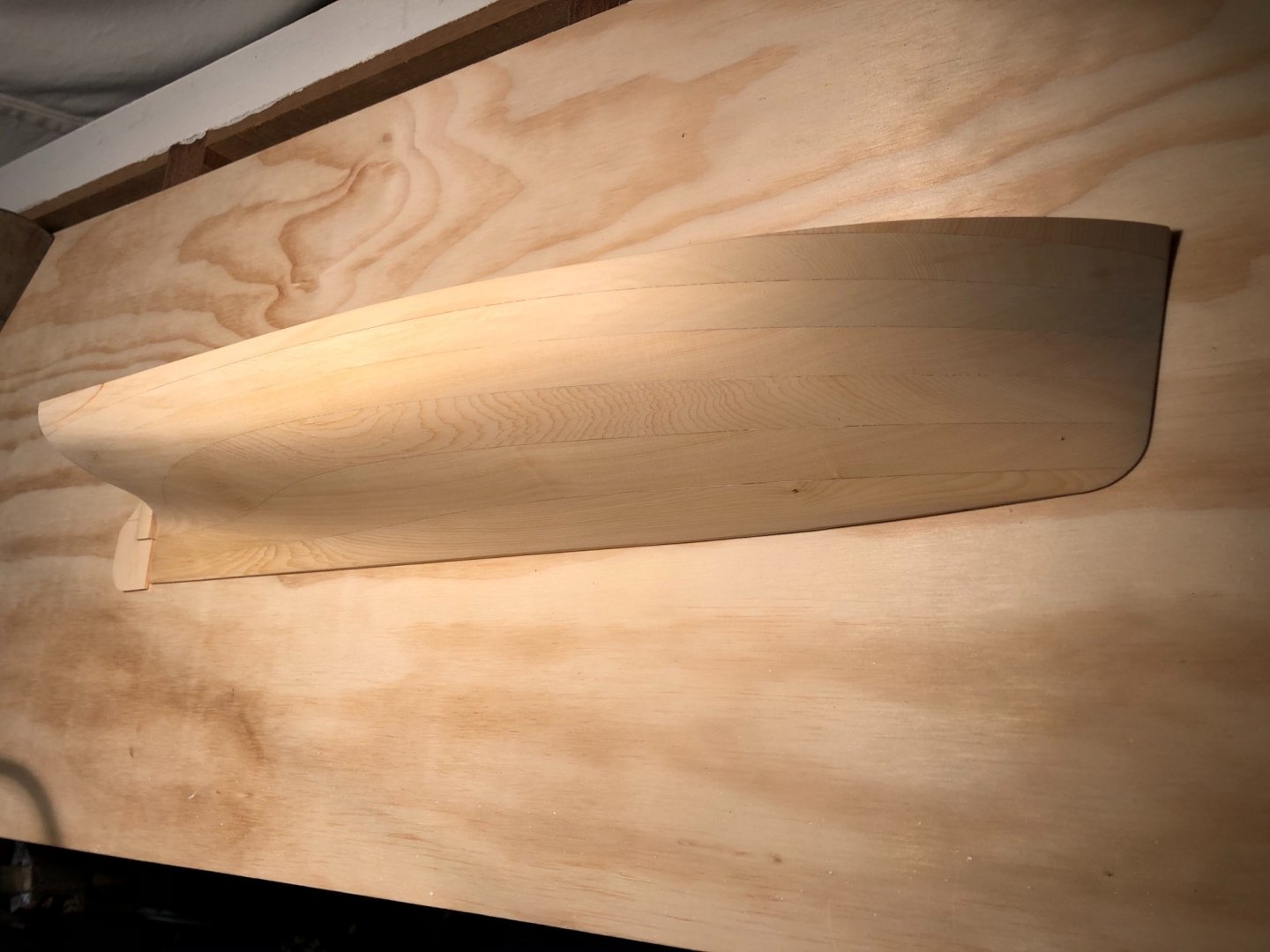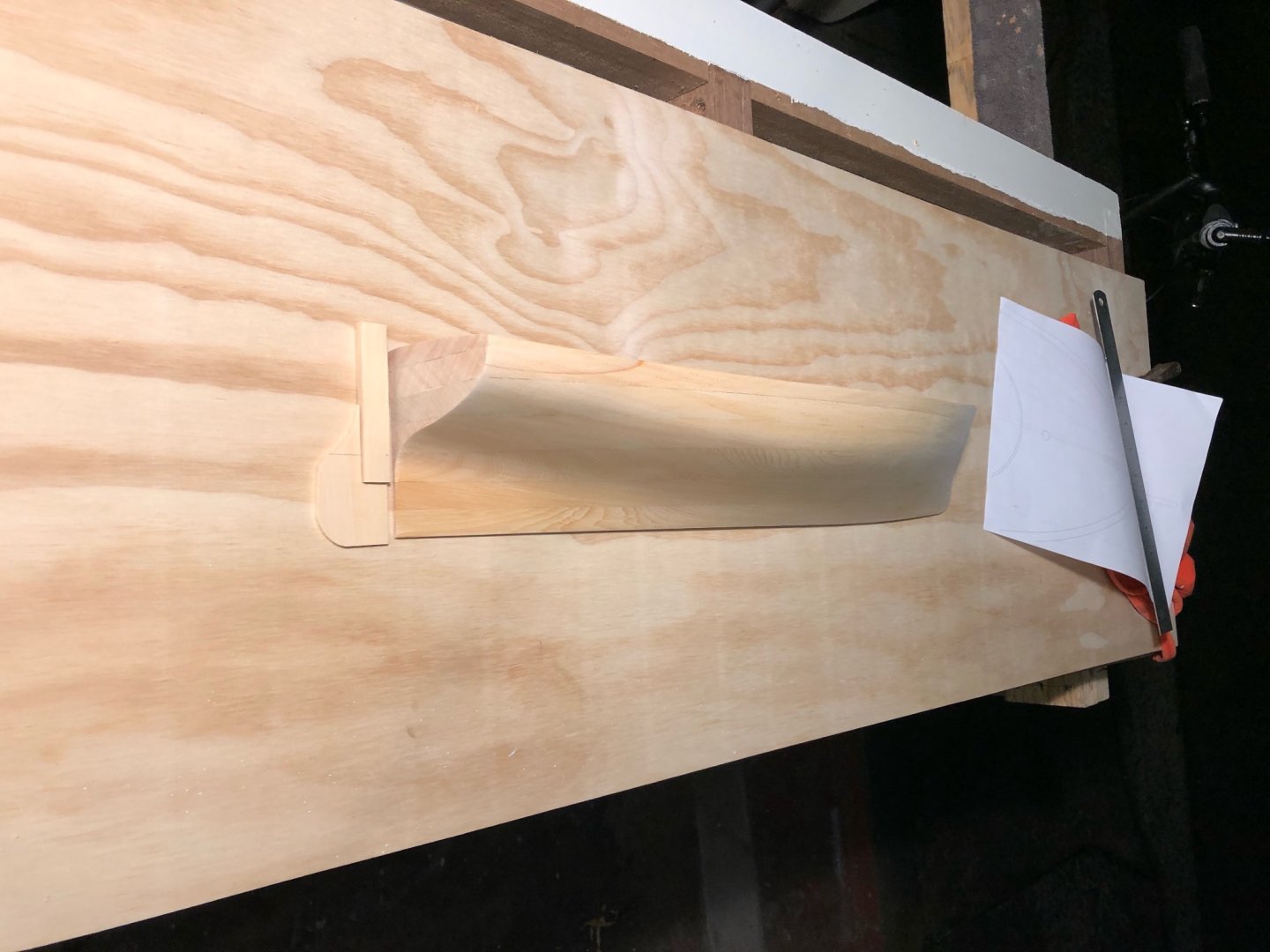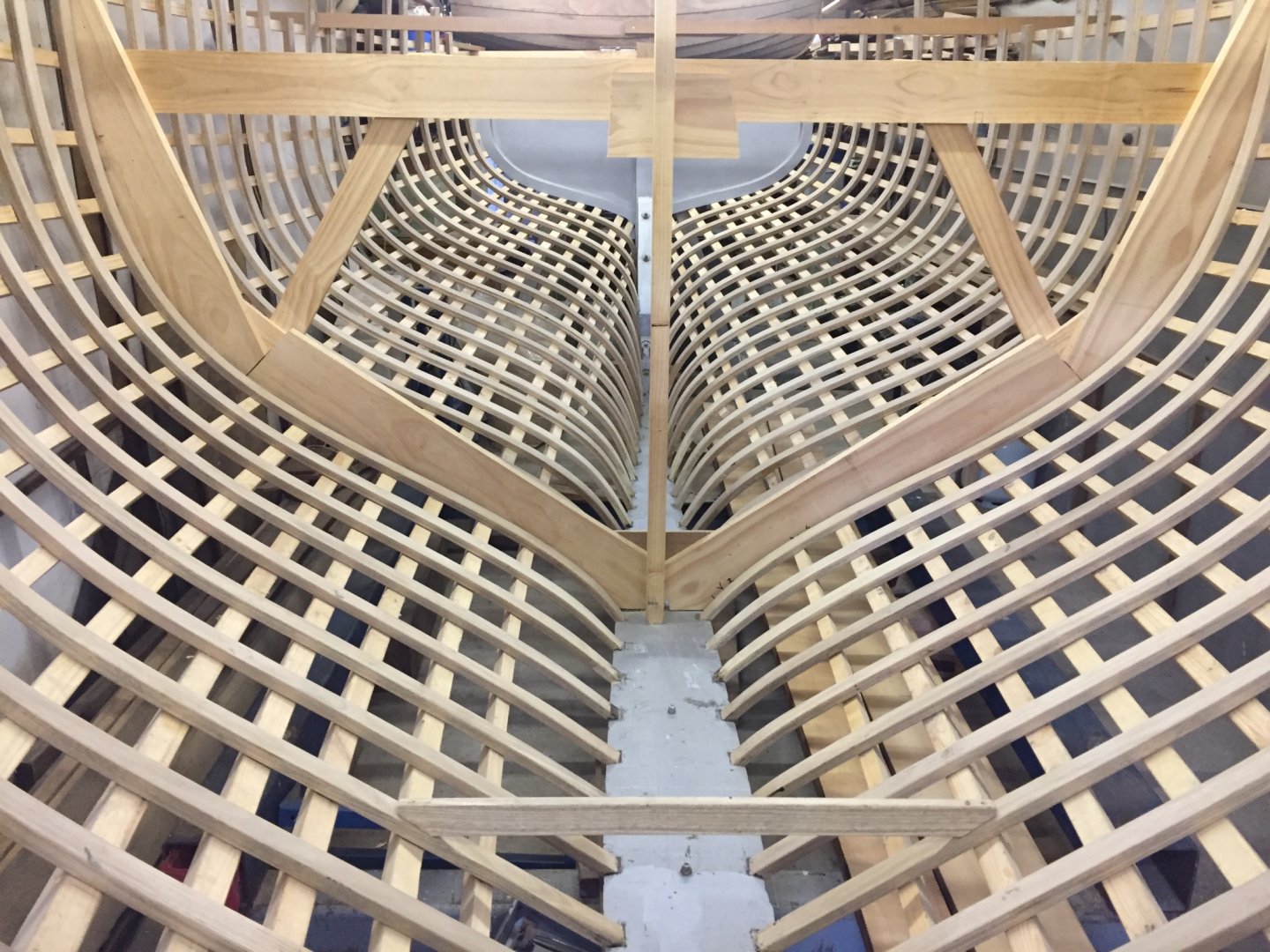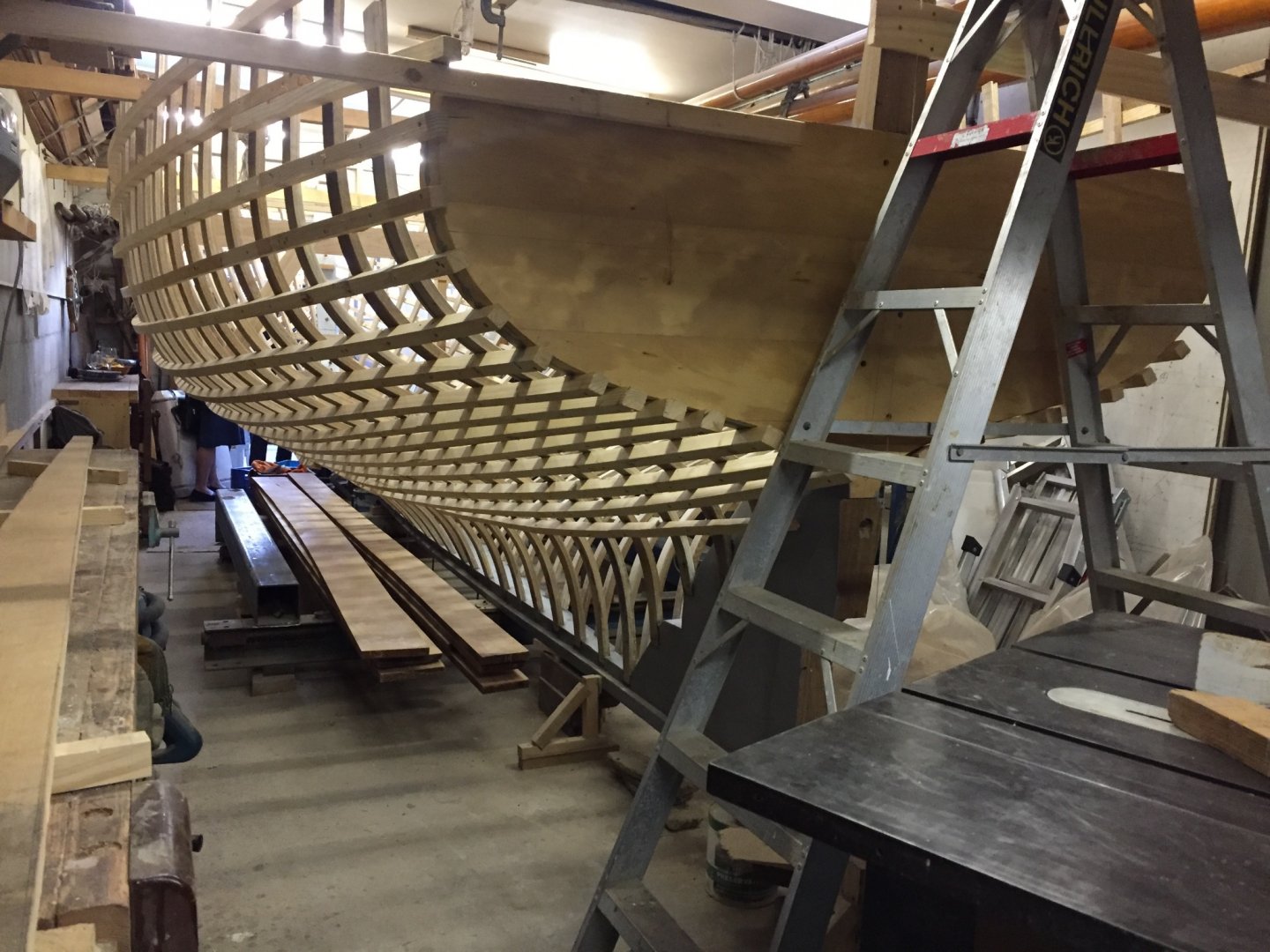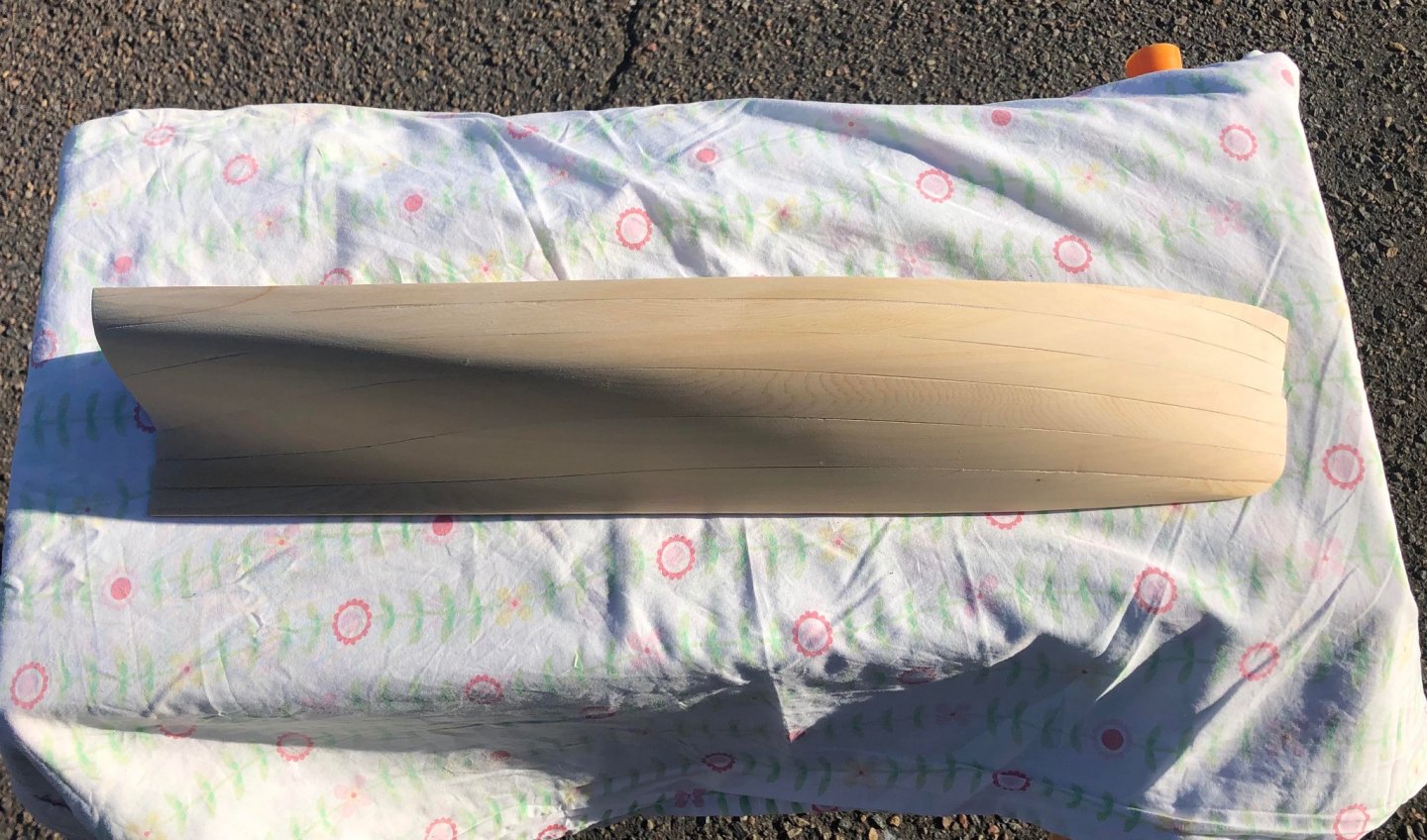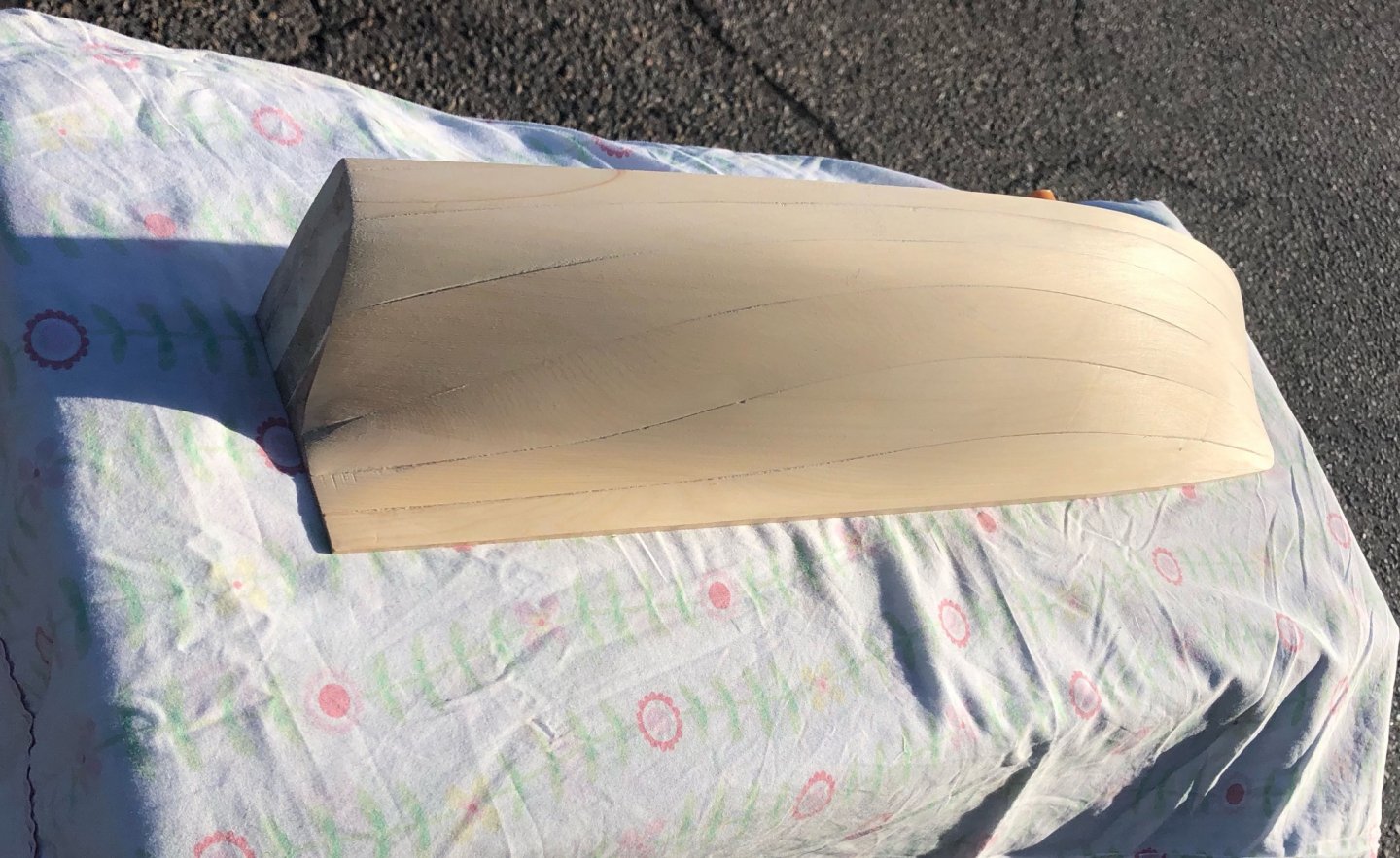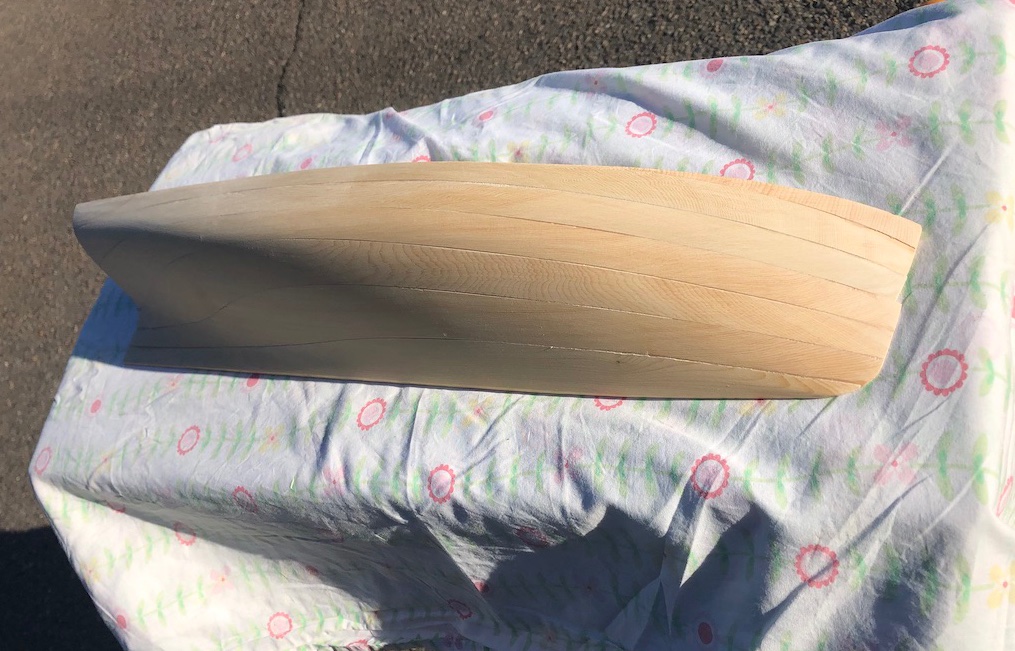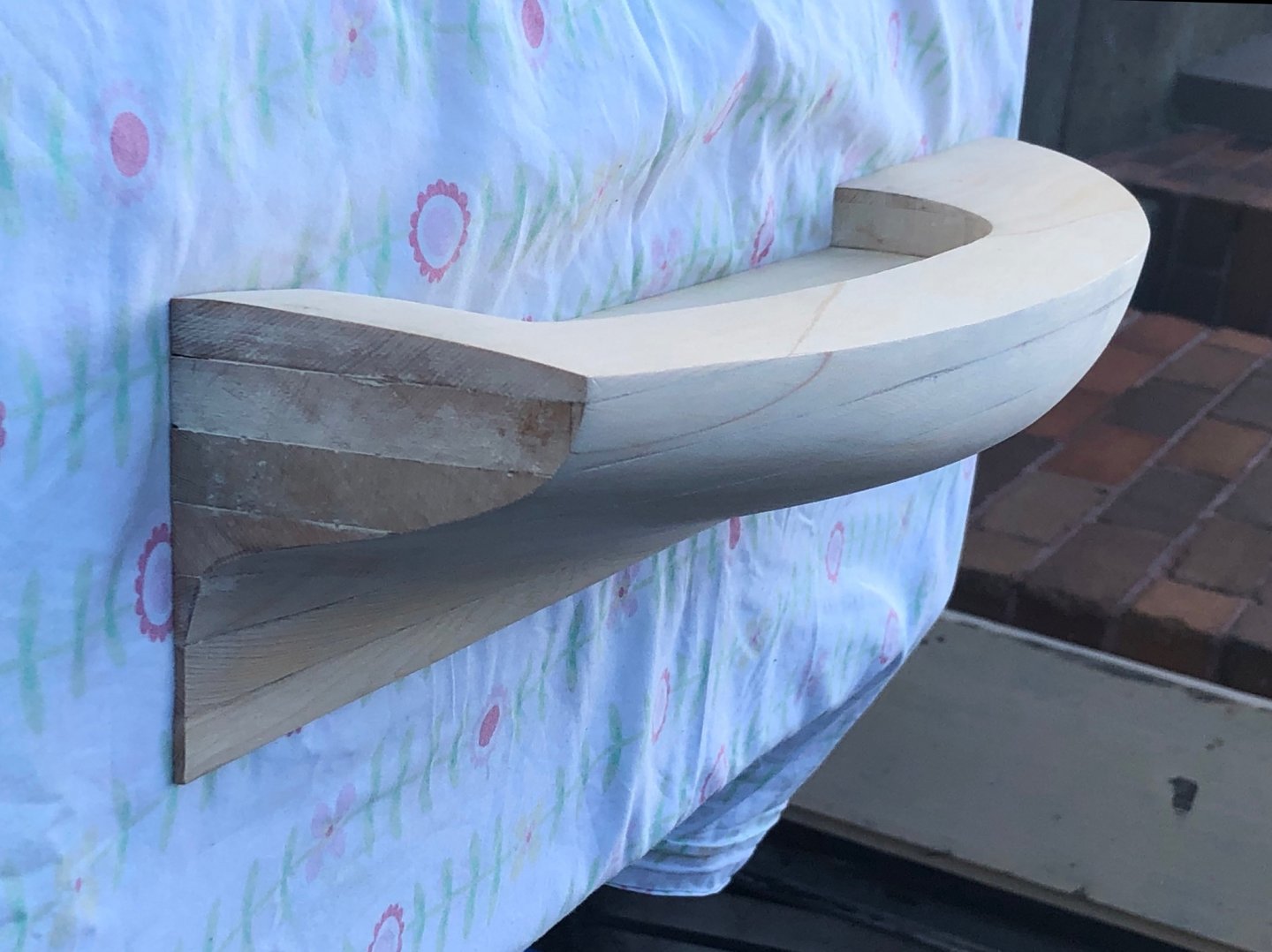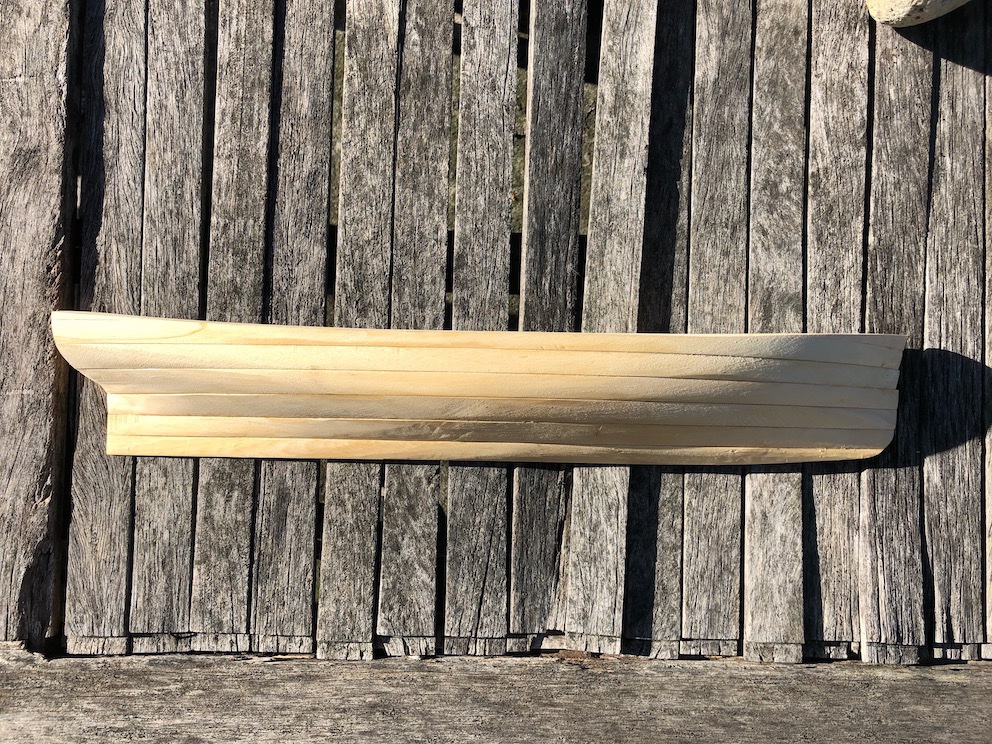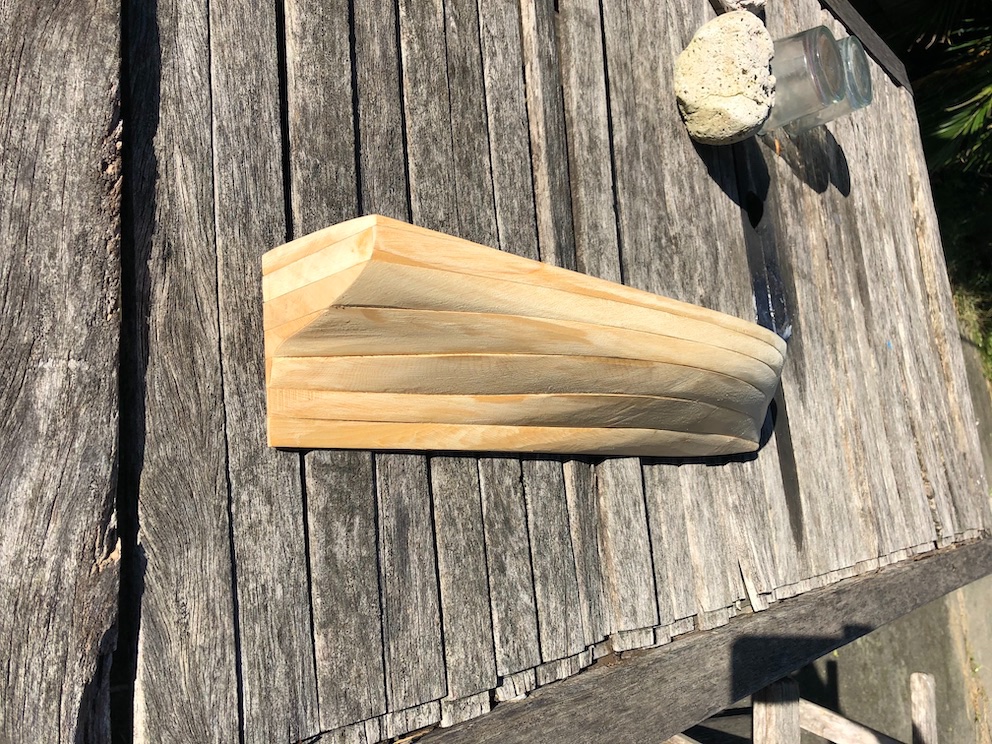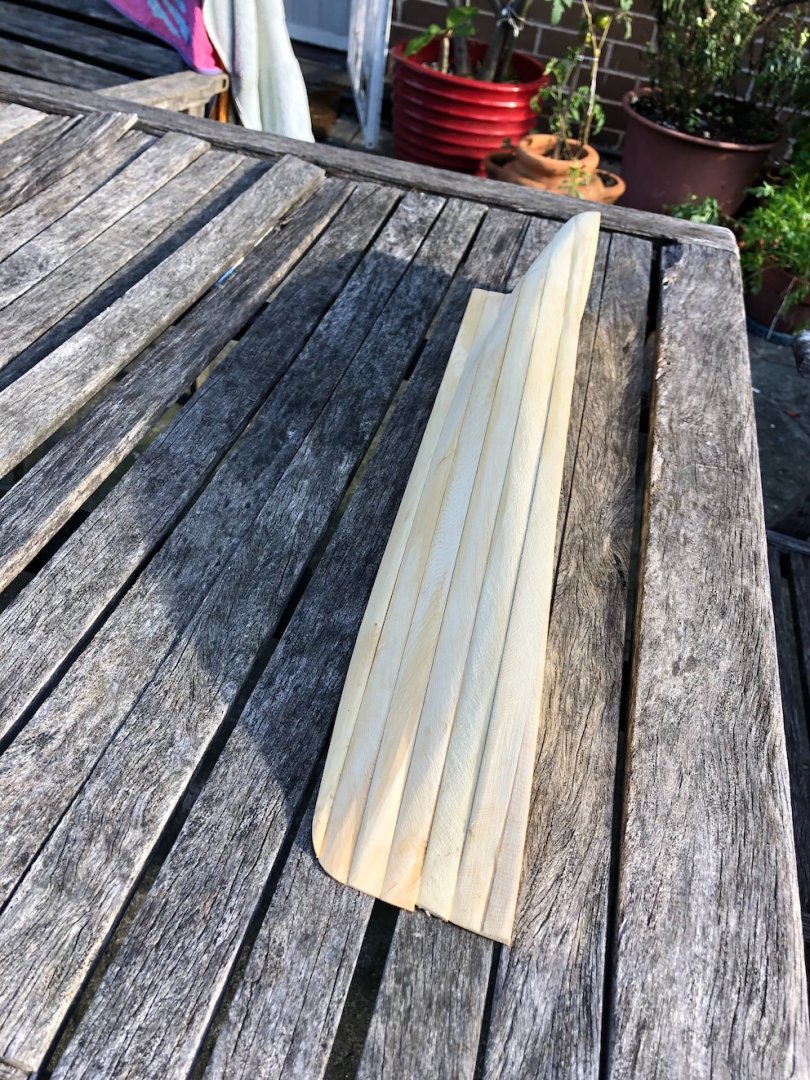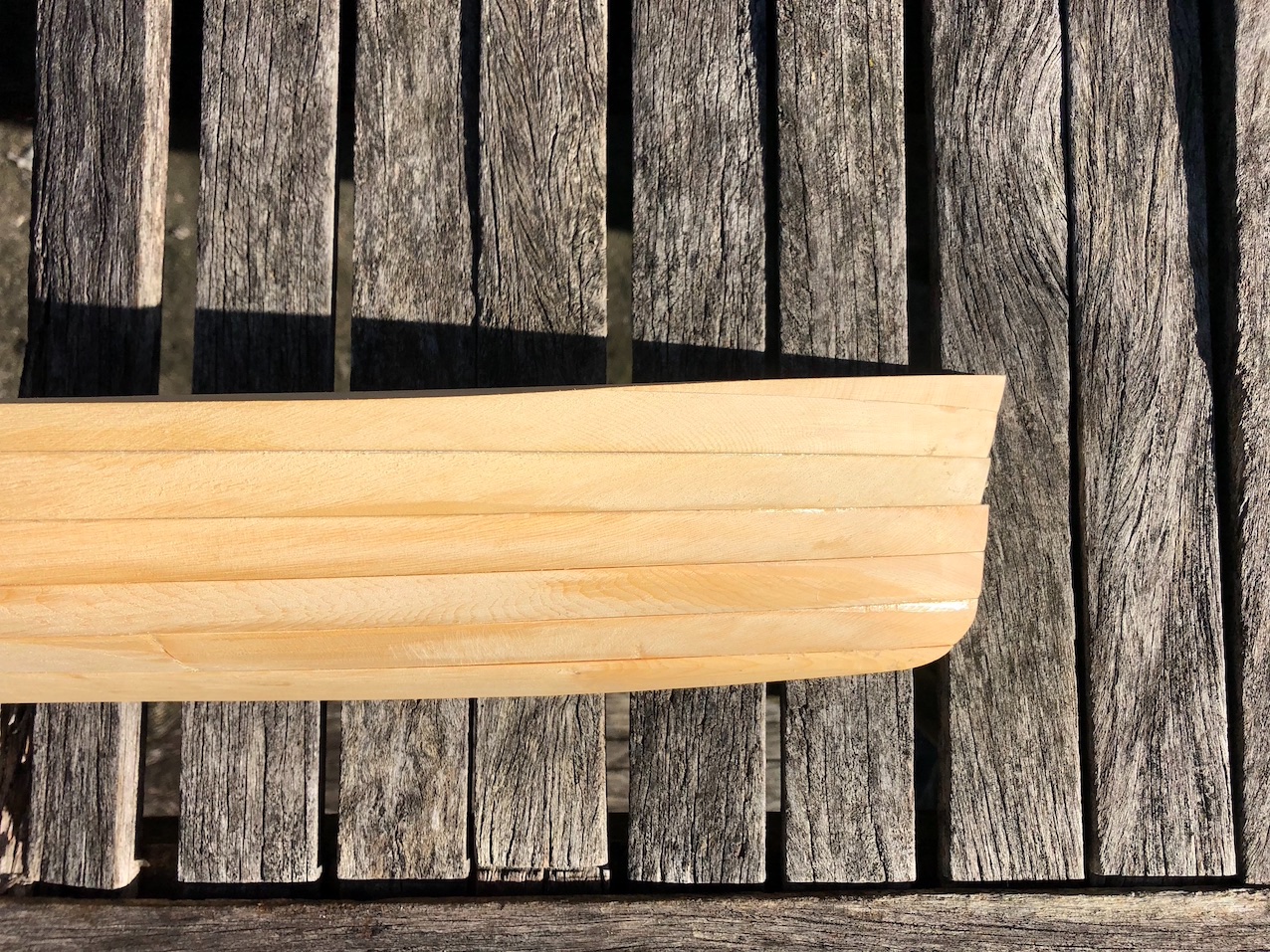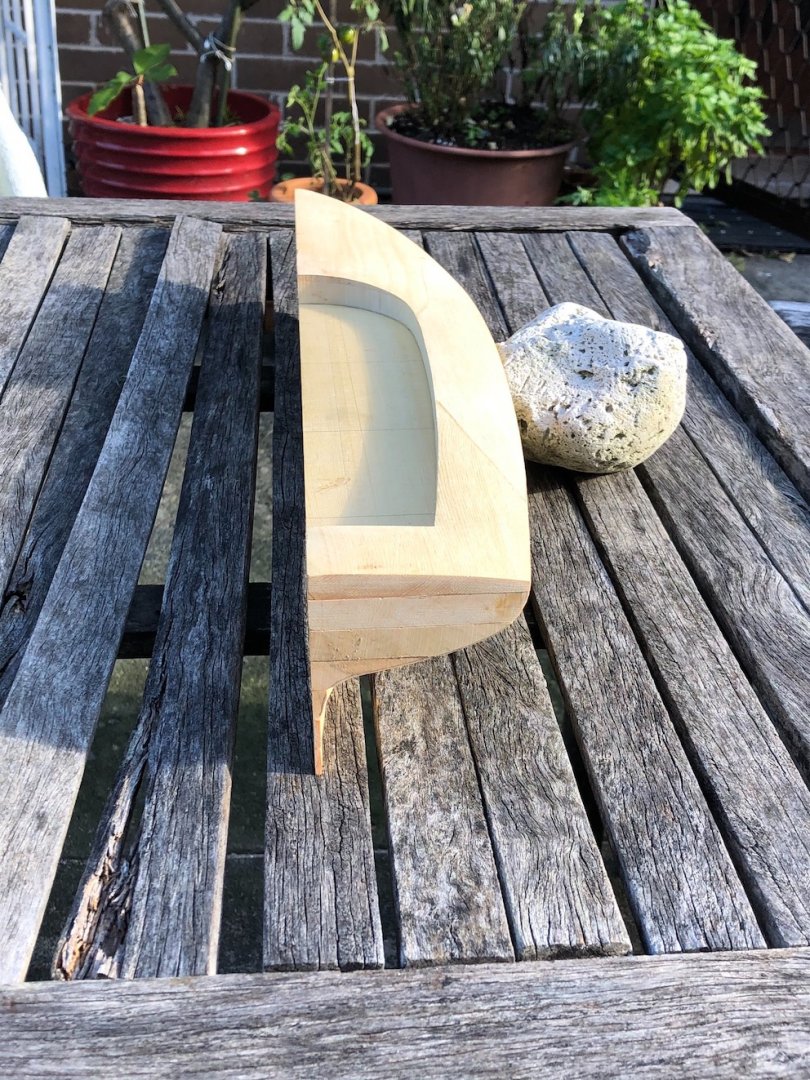-
Posts
804 -
Joined
-
Last visited
Content Type
Profiles
Forums
Gallery
Events
Everything posted by Mark Pearse
-
Jaager, Kurt, Roger - thank you for your thoughts. I'm not going to use glass because of that visual gap from the glass thickness when seen at acute angles, as Kurt noted. The front surface mirror is not something I've heard of & would bear investigation - except that am now the proud owner of a 1.6mm stainless steel sheet cut to size. Roger, I had wondered if something like this could work. Fortunately my brother has one of the rag wheels mounted to a heavy drill press. The polish acrylic mainly so I'd need to investigate the appropriate polishing bars, but probably a firm that sells them would advise. Any thoughts on the process below? Gently hand rub with some black scotch brite, then to white (maybe there's one between...), would get me close. Then perhaps the rag wheel trick. thanks
-
Hi everyone My current build is a half model & I plan to mount it on a sheet of mirror finish SS. I have a piece cut to size, it's 750 x 300mm, as per the poor quality photo below. The finish is some sort of mill finish, it's not brushed & it's smooth & relatively flawless but not polished. I want to polish to mirror finish, using straightforward tools like my hands, a drill etc. Has anyone any advice on a simple way to do this? thank you
-
I have been reflecting a mirror surface for mounting the half model. Glass has issues in that the reflective surface is at the back of the glass & you would see that as a gap between the half model & its reflection. I thought about chrome or nickel plated brass, but in my experience there's some surface corrosion & it would need regular polishing to remove. I'd been investigating mirror finish stainless steel, even though the colour is a bit cool. Anyway, I managed to get an offcut at a good price. The SS sheet is 750 x 300mm, not yet polished. This poor photo gives an idea of the proportion. As an aside for those that love tools (which is probably everyone on this forum), the mate who I got the SS from makes acoustic guitars in his spare time. The pic below shows part of his workshop - the timber hand planes he made himself. I have never seen dovetail saws like these ones, they were a pleasure to hold.
-
Hi Druxey Just found this build. Such a lovely hull, I shall be following with interest.
- 433 replies
-
- open boat
- small boat
-
(and 1 more)
Tagged with:
-
Thank you Steve, & welcome Pat. This one isn't one of the skiffs, although her shape is certainly influenced by them. More progress. Tiller arm roughed up & rough sanded. Next, the centreboard. Better get out the extra delicate thicknesser for this job... Sawn, planed, sanded, shaped & approximately in position. Looks little too far forward.
-
The hull has been sanded to shape, but not the final sanding. I've started making the extra pieces, rudder, tiller etc. I don't think a 'proper' half model has these, being a working tool to refine a hull shape. However, I am going to show them because it will show off a pretty hull all the better. The patch at the bow is difficult to see: But the patch on the topsides towards the stern is quite visible. The bow was done using epoxy with sawdust to colour; the topsides patch was using titebond, no colour added. I thought the titebond would disappear by being thin, however something didn't go to plan. I started with a drawing of the rudder, which is made from a thick stock & a thin blade. The stock tapers away behind the hull as the transom tapers at the waterline. Then made the pieces, unshaped below. The stock will remain squarish, this boat was generally a shapely hull with plain details. The rudder appears to hang below the hull, but I haven't yet added the lower part of the deadwood. That, plus the stem, will be an added strip. Previous patch clearly visible. Hmmm.
-
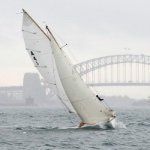
15' Dinghy by Bedford - FINISHED - 1:1 scale
Mark Pearse replied to Bedford's topic in Non-ship/categorised builds
without the #2 over? -

15' Dinghy by Bedford - FINISHED - 1:1 scale
Mark Pearse replied to Bedford's topic in Non-ship/categorised builds
Hi Steve They are very nicely shaped, remind me of the graceful oarlocks I saw on a Mediaeval long ship build. What oil do you use inside the hull? -
Golly - that's a remarkable boat. The hull appears to be very narrow near the tiller, & it must make some interesting moments for the helmsman when making a sharp turn.
- 179 replies
-
- longship
- Helga Holm
-
(and 1 more)
Tagged with:
-
lovely work Tobias; & the real oarlock is art & engineering
- 179 replies
-
- longship
- Helga Holm
-
(and 1 more)
Tagged with:
-
Hello Tobias Is there any evidence that they protected the planking from ballast?
- 179 replies
-
- longship
- Helga Holm
-
(and 1 more)
Tagged with:
-
I think this an inwale - on the inside of the planking & aligns with the gunwale on the outer side of the planking.
-
Hi Steve Yes, that's correct & Ian's boat is closely based on Ranger (her lines are a bit fuller than other versions of Ranger). If you search "youtube Ian Smith wooden boats" you'll find his channel, including recent videos on the Ranger build. My photos below are about 2 years ago. This video is from several weeks ago https://www.youtube.com/watch?v=DlJK3pfdWBs
-
Hi Hakan The rivets have been very successful. Does the lump on the top of the keelson have any function apart from being the middle bearing of the floor beam? I could see something similar in Woodrats build. Also, it's surprising just how quickly the halyards wear the keel away, I wonder what they did when it was really wearing out - whether they replaced a large piece of keel or added a sacrificial piece.
- 179 replies
-
- longship
- Helga Holm
-
(and 1 more)
Tagged with:
-
Thanks everyone The sanding is well progressed, I think hand sanding is the only way to do this. It's close in most areas now, time to keep a sharp eye on the shape. Fortunately a real shipwright (Ian Smith) made a half model of this boat & I've borrowed it, that will help a lot. I'll put up a photo. To even out hills & divots I used a piece of 1.5mm thick styrene that is a bit flexible & wrapped the sandpaper around it. A friend makes architectural models so I'll go & get some thinner stuff as well, to help with the concave sections. Especially the turn of the bilge near the transom. And the bow still needs that patch....
-
Thanks, an interesting photo. That scenery brings many memories to me, I went to the large island of Avenamaa (Åland) by small motor cruiser, as part of a 2 week trip through the Finnish south western archipelago from Helsinki. I later found out that the sailing trading vessels to & from Australia/Europe still operating after WWII were owned by a person or business on that island. Another fascinating thing was the video earlier in your blog; you can see that the square sail is very adaptable & the shape can be easily tweaked - flattened etc. When the boat was sailed without ballast, did you find that it rolled more suddenly? Say when a wind gust came along.
- 179 replies
-
- longship
- Helga Holm
-
(and 1 more)
Tagged with:
-
thanks everyone Amazing, a sunny day. The rain has been huge, much of the NSW coast has had over 400mm of rain in just the last week, & some places over 1m of rain in one week. Incredible volumes of water. But .... being selfish for just a moment, the sun certainly helps with taking photos. I started shaping the half model lifts. I kept a lines drawing nearby to make sure I knew whether the shape between the edge & the pencil line was straights, concave or convex. When it was clearly getting close, but harder to remove more timber with certainty, I glued them together. It's still rough, but most of the timber removals been done. In fact slightly too much on a couple of spots at the bow - patches required. Sadly the sweet lines don't show yet. It may need to be mounted for them to show. I'm considering mounting it on a reflective surface. Not mirror, as there's a visual gap due to the glass thickness. I'm going to investigate polished stainless, even though the colour is a bit grey, the salty humid air at the sailing club wall would mean chromed brass would need frequent polishing. Next step is sanding & more sanding. Then shaping added details. Too much timber removed......
-
Hi bolin, I just went through your whole build, a fascinating subject & you are doing a beautiful job. The builders of this really boat seemed to know exactly how light they could go - the method of frame supports (Post 70) for the upper planks is so delicate & beautiful. The very shallow cross sectional shape appears somewhat unlikely & earlier there was some brief discussion on just how seaworthy this craft might have been - however that photo of the heavily loaded Norwegian vessel shows just what similar vessels are capable of. Also, I have come to appreciate how seaworthy a shallow light craft can be.
- 179 replies
-
- longship
- Helga Holm
-
(and 1 more)
Tagged with:
-
The question of volumes to scale seems to show how we tend to see scale as a linear dimension. We don't really see that for a model of 1:10, areas are at 1:100 scale (eg: a sail), & volumes are at 1:1000 scale (eg: ballast or hull volume). So it is curious that it still looks right. Hakan, I think what you have done is authentic.
-
Hakan The hull shape reminds me of a pilot boat done for the Finnish archipelago by Colin Archer. Beamier & shallower than the Norwegian ones. I think she is called Pitkapaasi & maybe 30', so much bigger. However the similarity of hull shape is interesting - & both are very beautiful. A very enjoyable build to follow. Mark
About us
Modelshipworld - Advancing Ship Modeling through Research
SSL Secured
Your security is important for us so this Website is SSL-Secured
NRG Mailing Address
Nautical Research Guild
237 South Lincoln Street
Westmont IL, 60559-1917
Model Ship World ® and the MSW logo are Registered Trademarks, and belong to the Nautical Research Guild (United States Patent and Trademark Office: No. 6,929,264 & No. 6,929,274, registered Dec. 20, 2022)
Helpful Links
About the NRG
If you enjoy building ship models that are historically accurate as well as beautiful, then The Nautical Research Guild (NRG) is just right for you.
The Guild is a non-profit educational organization whose mission is to “Advance Ship Modeling Through Research”. We provide support to our members in their efforts to raise the quality of their model ships.
The Nautical Research Guild has published our world-renowned quarterly magazine, The Nautical Research Journal, since 1955. The pages of the Journal are full of articles by accomplished ship modelers who show you how they create those exquisite details on their models, and by maritime historians who show you the correct details to build. The Journal is available in both print and digital editions. Go to the NRG web site (www.thenrg.org) to download a complimentary digital copy of the Journal. The NRG also publishes plan sets, books and compilations of back issues of the Journal and the former Ships in Scale and Model Ship Builder magazines.



